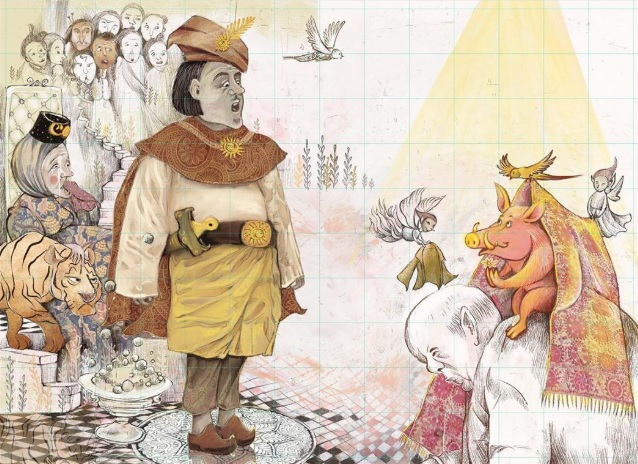Calendrical data in Hikayat Raja Babi
The Ian Proudfoot (2002) AHAD: A macro for converting Muslim and Christian dates. This implementation of the al-Battani type arithmetic Islamic calendar was first written in February 2002 and last revised in May 2008. See also Ian Proudfoot (2006) Old Muslim calendars of Southeast Asia, Leiden, Brill.calendrical algorithm employed by the late ANU scholar Ian Proudfoot in his AHAD spreadsheet macro is a variant of the arithmetic Islamic calendar, and it is based on the earlier work by Greville S. P. Freeman-Grenville (1963) The Muslim and Christian calendars; being tables for the conversion of Muslim and Christian dates from the Hijra to the year A.D. 2000, Oxford University Press, London.Freeman-Grenville. The algorithm can provide a convenient initial value to approximate the Gregorian equivalent of an Islamic date.
However, because the sunset of the prior day vs. midnightdatum of a given weekday is different in Islamic reckoning and Gregorian reckoning, unless the weekday data and the clock data of a given Islamic date is also explicitly mentioned, it is almost not possible to determine its exact Gregorian match.
It is often stressed that the most reliable element of an Islamic date is its weekday data, and it should be used to cross-check any Islamic-Gregorian date conversion. This is only partially correct, because even when weekday data is explicitly made available, the resulting conversion is still not 100% conclusive.
About two years ago, I wrote to British Library to highlight a date problem in their bibliographical record and the following was the reply from the Southeast Asia lead curator:
Thank you for your message, and for your interesting work on the date of the Hikayat Raja Babi.
Yes, there are a lot of variables to be taken into consideration, and the start of the Muslim day the evening before is certainly important to bear in mind.
Another very important consideration is that the start of the month can vary in different parts of the Muslim world by one or two days, due to differing visibility of the moon. This is the main reason why Proudfoot stresses the overarching valdity of the weekday, rather than the day of the month, in converting dates.
Having said that, in my own work, unless I really really need to interrogate the actual date of an occurrence – for whatever reason – I tend to simply convert Muslim dates with Ian’s AHAD converter and leave it at that, because the weekday can lead to ambiguity between two dates (because of the evening /morning style) if the manuscript does not state the actual time of day. However, when that information is available – as here – it is indeed interesting, as you have done, to follow it through.
Best wishes
Annabel Gallop
For example, in the case of the date given by Usup A. Kadir (1775) Hikayat Ceritera Raja Babi (romanized by Arsyad Mokhtar in 2014, published by Buku Fixi in 2015)Usup Abdul Kadir in his Hikayat Ceritera Raja Babi, the accuracy of the Gregorian conversion can only be made slightly better but not 100% conclusive. Since sunset of 12 January 1775 is The solar positions in the timenline are computed with the calendrical algorithms by Reingold and Dershowitz. Clocks are given in GMT+8, but the exact local noon positions are also marked in the timeline. See E. M. Reingold, N. Dershowtiz (2018) Calendrical calculations, The ultimate edition, Cambridge University Press, Cambridge. I am using the version ported to Mathematica by Robert McNally in 2002.approximately 19:39, we have a 18% chance that Usup’s date is January 12, and this also means that we can say with slightly higher probability that Usup’s date is January 13.
Interestingly, since the clock data is also mentioned in Usup’s manuscript,
the probabilistic guesstimate can be further reinforced. However, it should be noted that Usup’s pukul sebelas can be either 12 Jan 23:00 or 13 Jan 11:00. It is believed that Usup’s pukul sebelas is only his approximation of the time of day, and it is best interpreted as one-hour to noon (marked with a vertical red line in the timeline).
If a shadow-based time-keeping technology is assumed, it is almost impossible for one to record a time of one-hour to midnight. One-hour to noon, however, is relatively easier and therefore should be assigned with slightly higher probabilty. Also, one-hour to noon is a slightly better candidate since 23:00 is unusually late for a scribe without modern lux technology.









Comments